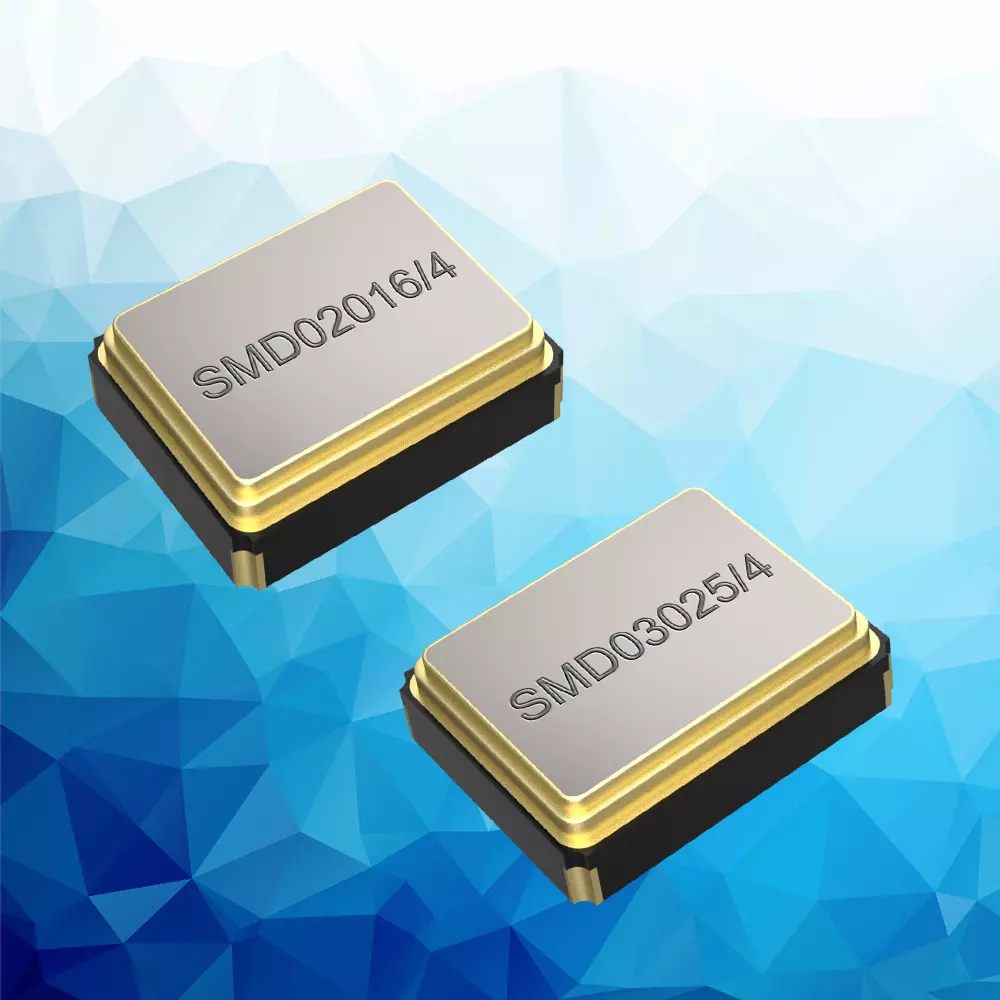The size and frequency stability of clock generators influence the dimensions and power requirements of an end device. Developers of battery-operated products in particular require precise and compact frequency generators - anoverview of the current state of the art in the quartz crystal market.
Quartz crystals (simply called quartz crystals) were developed in the early 1920s as practical crystals for use in radio technology. Today, quartz crystals have become an integral part of our modern, technological lives. In recent years, there has been a major shift from large THT (Through-Hole Technology) and SMD (Surface Mounted Device) crystals in metal housings to miniaturised SMD crystals in ceramic housings. The demand for higher frequency crystals in smaller housings has further fuelled this trend. Thanks to technological advances and several manufacturing innovations, it has been possible to significantly reduce the size of the crystals without compromising on performance or cost.
The 3.2 x 2.5 mm form factor is currently widely used in all kinds of applications, usually in conjunction with resistance optimisation of the crystals for optimum transient response in the defined operating temperature ranges and in the frequency range from 8.0 to 64.0 MHz (AT fundamental). They can be operated with a drive level of up to 500 µW (in the frequency range from 12.0 to 64.0 MHz). Components with frequency tolerances of up to ±10 ppm and a temperature range of -55 to 125 °C are available for particularly demanding applications.
In recent years, the SMD quartz crystal in a ceramic housing with dimensions of 2.5 x 2.0 mm (4-pad) has developed in parallel to the 3.2 x 2.5 mm (4-pad) housing, but has never really caught on. If a 3.2 mm x 2.5 mm housing is too large, the high-volume product in a 2.0 x 1.6 mm housing (4-pad) can be used. This type of housing is very popular for very small applications. The crystal designs in this form factor are also resistance-optimised and designed for optimum transient response. The developer can use versions with a drive level of up to 400 µW.
The trend towards smaller housings and higher frequency stability can also be seen in the clock crystals. The smallest version with dimensions of 1.2 x 1.0 mm is about to be launched on the market. 32.768 kHz crystals in a 3.2 x 1.5 mm housing and 2.0 x 1.2 mm with reduced resistance are now also being used extensively in end devices. Low-resistance crystals with 32.768 kHz and also the standard versions are available on the quartz market with load capacities of 4 to 12.5 pF in the temperature range from -40 to +125 °C. The developer can choose between two frequency tolerances. The developer can choose between two frequency tolerances at +25 °C: ±10 ppm (optional) or ±20 ppm (standard).
More and more IC manufacturers are using SMD crystals with integrated thermistors, for example in 2.0 x 1.6 mm ceramic housings. These crystals are being used more and more in battery-powered communication products and are replacing current-consuming (up to 2mA) temperature-compensated crystal oscillators (TCXO).
In conclusion, it can be said that in recent years the seemingly impossible has been achieved in the development of quartz crystals: The miniaturisation of housing sizes has been driven forward without any reduction in performance or increase in costs and, almost incidentally, the technological advances in the electronics industry have been used to accompany ever more innovative solutions in product design to market maturity. The result is ever greater frequency stability with ever smaller housing sizes.
Further information at:
Technical questions:
Telephone: 0 81 91 / 30 53 95
E-mail: info(at)petermann-technik.de

